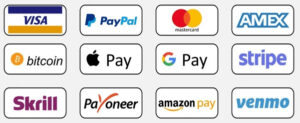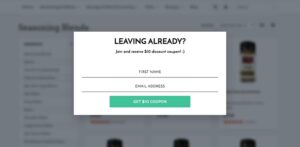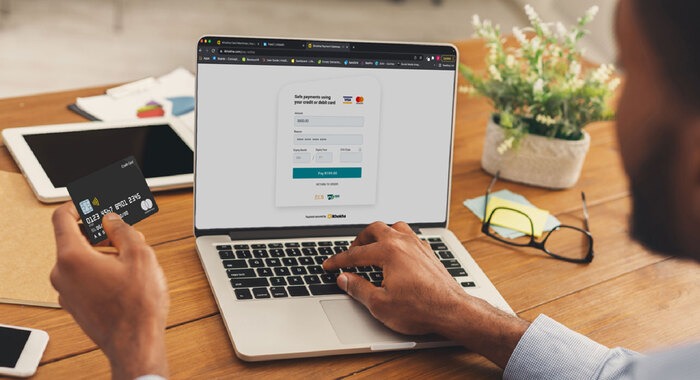If you’re struggling with cart abandonment or low conversions, it’s time to focus on checkout optimization. This is where you can make a huge impact on your sales without having to rework your entire store. By reducing friction during checkout, you can dramatically improve the user experience, boost conversions, and ultimately increase your revenue.
In this post, we’re going to dive deep into the best Shopify checkout hacks to boost conversion rates. These actionable strategies will help you smooth out the checkout process, reducefriction, and make your customers’ journey from cart to checkout as seamless as possible. Ready to transform your checkout experience and boost your sales? Let’s get started.
Why Your Shopify Checkout Might Be Hurting Your Sales
Before we jump into the solutions, let’s take a step back and understand why your checkout process may be driving customers away. The checkout process is critical in the conversion funnel. If it’s too complicated, slow, or confusing, it’s a major turnoff for potential buyers.
Some common checkout friction points include:
- Too many steps: Lengthy checkout processes overwhelm customers.
- Hidden costs: Surprise shipping fees or taxes can cause frustration.
- Lack of payment options: Customers want flexibility.
- Slow loading times: The slower the checkout, the higher the abandonment rate.
Research backs up these challenges. 40% of shoppers say they abandon a purchase because the checkout process is too long or complicated. That’s a massive opportunity for improvement, and a few changes could lead to a significant boost in conversions.
1. Simplify Your Checkout Process
The simpler the checkout, the better. This is one of the most effective Shopify checkout hacks. A straightforward, streamlined process reduces friction and helps customers stay focused on completing their purchase.
Here’s how to simplify your checkout process:
- Limit the number of fields: Only ask for essential information. The more fields customers have to fill out, the higher the chances of abandonment. Consider removing unnecessary fields like company name or address line 2.
- Enable guest checkout: Many customers don’t want to create an account before making a purchase. Offering guest checkout as an option can increase conversions.
- Use auto-fill: For returning customers, auto-fill their shipping and billing information wherever possible. This saves them time and creates a smoother experience.
Real-World Example:
One Shopify store specializing in skincare products simplified their checkout process by reducing the number of form fields and enabling auto-fill for returning customers. As a result, they saw a 15% increase in conversion rates within a month.
2. Offer Multiple Payment Options

A one-size-fits-all approach doesn’t work when it comes to payment methods. Consumers expect flexibility when it comes to paying for their purchases. Offering a variety of payment options can help cater to a wider audience, and it may be the key to closing more sales.
Here’s how to improve your payment options:
- Support credit and debit cards: Ensure you offer major credit card options like Visa, MasterCard, and American Express.
- Add digital wallets: Services like PayPal, Apple Pay, and Google Pay are becoming increasingly popular due to their convenience.
- Consider “Buy Now, Pay Later” (BNPL) options: Services like Klarna or Afterpay allow customers to split their payments, making purchases feel more affordable.
Why it matters:
A study by Shopify found that offering alternative payment options increases the likelihood of a customer completing their purchase by up to 30%. More payment methods can reduce friction by allowing customers to use their preferred payment method without frustration.
3. Remove Surprise Costs (Including Shipping)
Hidden costs, especially around shipping, are one of the top reasons for cart abandonment. A study by Baymard Institute revealed that 56% of users abandon their cart because of surprise shipping costs. So, how can you reduce this friction?
Here’s what you can do:
- Offer free shipping: If possible, offer free shipping on all orders or above a certain order value. Consumers love free shipping, and it can be a great motivator for completing the checkout.
- Show shipping costs upfront: If you can’t offer free shipping, show the shipping costs early in the process. Don’t wait until the customer is at the checkout stage to spring them on the user.
- Use transparent pricing: If taxes are applied, make sure they’re calculated and shown upfront before customers get to the checkout page.
Real-World Example:
A Shopify store selling home goods started offering free shipping on orders over $50 and increased their sales by 20% in the first quarter after implementing this strategy. Customers appreciated the transparency and felt more confident in completing their purchases.
4. Speed Up the Checkout Process
In e-commerce, every second counts. Slow loading times can lead to frustrated customers and abandoned carts. According to Google, 53% of mobile site visits are abandoned if the page takes longer than three seconds to load.
Here’s how to improve your checkout speed:
- Optimize your images: Make sure your product images are compressed without compromising quality. Large image files can slow down your checkout process.
- Enable faster payment methods: Payment methods like Apple Pay and Google Pay use pre-saved information, which can speed up the checkout process.
- Minimize redirects: Every time a customer is redirected, it can add extra load time. Try to minimize redirects and streamline the checkout flow.
5. Implement Exit-Intent Popups for Last-Minute Conversions

Exit-intent popups are an incredibly effective tool for capturing customers who are about to leave your checkout page. These popups can offer a discount or incentive to encourage users to complete their purchase before they leave.
How to use exit-intent popups effectively:
- Offer a discount: A 10-15% discount on their order can motivate hesitant customers to hit the “complete purchase” button.
- Provide urgency: Use language like “Only 2 left in stock!” or “This offer expires in 10 minutes” to prompt immediate action.
- Ask for feedback: If a customer is abandoning the checkout without purchasing, you can ask them why they didn’t complete the purchase and gain insights into what’s preventing conversions.
6. Mobile-First Design: Optimize for Mobile Shoppers
More than half of e-commerce traffic now comes from mobile devices. That means if your checkout experience isn’t optimized for mobile, you’re missing out on a huge chunk of potential sales.
How to optimize your Shopify checkout for mobile:
- Simplify the layout: Mobile screens are smaller, so ensure your checkout is clean and easy to navigate.
- Use larger buttons and fonts: Make it easy for customers to click on buttons and enter information.
- Test your checkout on different devices: Run tests to ensure everything looks and functions as it should on smartphones, tablets, and desktops.
7. Use Social Proof to Encourage Trust
Social proof, like customer reviews, testimonials, and trust badges, can increase your checkout conversion rate by reassuring customers that your store is legitimate and reliable. Displaying this information on your checkout page helps build trust.
How to implement social proof at checkout:
- Display recent reviews or ratings: Show reviews for the product the customer is about to purchase.
- Show trust badges: Display security and payment badges like “Verified by Visa” or “SSL Secure” to assure customers their data is safe.
- Use testimonials: Share short, impactful testimonials that speak to your store’s credibility and reliability.
Conclusion: Optimizing Your Shopify Checkout for Maximum Sales
Checkout optimization is an essential aspect of running a successful Shopify store. By simplifying the process, offering multiple payment options, reducing surprise costs, speeding up the process, and implementing the right tools, you can create a smoother, more efficient experience for your customers. Whether you’re just starting out or already have an established store, these best Shopify checkout hacks to boost conversion rates can make a significant difference in your sales.
The good news? You don’t have to overhaul your entire store to see results. Even small tweaks to your checkout process can lead to big wins.


1 thought on “Shopify Checkout Hacks: Reduce Friction, Boost Sales”
Comments are closed.